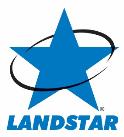Net income was $52,624,000, or $1.48 per basic and diluted share, in the 2024 thirteen-week period. Net income was $66,559,000, or $1.85 per basic and diluted share, in the 2023 thirteen-week period.
CAPITAL RESOURCES AND LIQUIDITY
Working capital and the ratio of current assets to current liabilities were $709,467,000 and 2.2 to 1, respectively, at June 29, 2024, compared with $677,517,000 and 2.0 to 1, respectively, at December 30, 2023. Landstar has historically operated with current ratios within the range of 1.5 to 1 to 2.0 to 1. Cash provided by operating activities was $142,343,000 in the 2024 twenty-six-week period compared with $191,733,000 in the 2023 twenty-six-week period. The decrease in cash flow provided by operating activities was primarily attributable to decreased net income.
The Company declared and paid $0.66 per share, or $23,579,000 in the aggregate, in cash dividends during the twenty-six-week period ended June 29, 2024 and, during such period, also paid $71,433,000 of dividends payable which were declared in December 2023 and included in current liabilities in the consolidated balance sheet at December 30, 2023. The Company declared and paid $0.60 per share, or $21,586,000 in the aggregate, in cash dividends during the twenty-six-week period ended July 1, 2023 and, during such period, also paid $71,854,000 of dividends payable which were declared in December 2022 and included in current liabilities in the consolidated balance sheet at December 31, 2022. During the twenty-six-week period ended June 29, 2024, the Company purchased 315,649 shares of its common stock at a total cost of $56,995,000, including $56,515,000 in cash purchases and accrued excise tax of $480,000, which is included in other current liabilities in the consolidated balance sheet at June 29, 2024. During the twenty-six-week period ended July 1, 2023, the Company purchased 89,661 shares of its common stock at a total cost of $15,433,000. As of June 29, 2024, the Company may purchase in the aggregate up to 2,684,351 shares of its common stock under its authorized stock purchase programs. Long-term debt, including current maturities, was $73,377,000 at June 29, 2024, $2,237,000 higher than at December 30, 2023.
Shareholders’ equity was $1,000,812,000, or 93% of total capitalization (defined as long-term debt including current maturities plus equity), at June 29, 2024, compared to $983,923,000, or 93% of total capitalization, at December 30, 2023. The increase in shareholders’ equity was primarily the result of net income, partially offset by purchases of shares of the Company’s common stock and dividends declared by the Company in the 2024 twenty-six-week period.
On July 1, 2022, Landstar entered into a second amended and restated credit agreement with a bank syndicate led by JPMorgan Chase Bank, N.A., as administrative agent (as further amended as of June 21, 2024, the “Credit Agreement”). The Credit Agreement, which matures July 1, 2027, provides for borrowing capacity in the form of a revolving credit facility of $300,000,000, $45,000,000 of which may be utilized in the form of letters of credit. The Credit Agreement also includes an “accordion” feature providing for a possible increase of up to an aggregate amount of borrowing capacity of $600,000,000.
The Credit Agreement contains a number of covenants that limit, among other things, the incurrence of additional indebtedness. The Company is required to, among other things, maintain a minimum fixed charge coverage ratio, as described in the Credit Agreement, and maintain a Leverage Ratio, as defined in the Credit Agreement, below a specified maximum. The Credit Agreement provides for a restriction on cash dividends and other distributions to stockholders on the Company’s capital stock to the extent there is a default under the Credit Agreement. In addition, the Credit Agreement under certain circumstances limits the amount of such cash dividends and other distributions to stockholders to the extent that, after giving effect to any payment made to effect such cash dividend or other distribution, the Leverage Ratio would exceed 2.5 to 1 on a pro forma basis as of the end of the Company’s most recently completed fiscal quarter. The Credit Agreement provides for an event of default in the event that, among other things, a person or group acquires 35% or more of the outstanding capital stock of the Company or obtains power to elect a majority of the Company’s directors or the directors cease to consist of a majority of Continuing Directors, as defined in the Credit Agreement. None of these covenants are presently considered by management to be materially restrictive to the Company’s operations, capital resources or liquidity. The Company is currently in compliance with all of the debt covenants under the Credit Agreement.
At June 29, 2024, the Company had no borrowings outstanding and $35,025,000 of letters of credit outstanding under the Credit Agreement. At June 29, 2024, there was $264,975,000 available for future borrowings under the Credit Agreement and access to an additional $300,000,000 under the Credit Agreement’s “accordion” feature. In addition, the Company has $77,629,000 in letters of credit outstanding as collateral for insurance claims that are secured by investments totaling $86,254,000 at June 29, 2024. Investments, all of which are carried at fair value, include primarily investment-grade bonds, asset-backed securities, commercial paper and U.S. Treasury obligations having maturities of up to five years. Fair value of investments is based primarily on quoted market prices. See “Notes to Consolidated Financial Statements” included herein for further discussion on measurement of fair value of investments.
31
